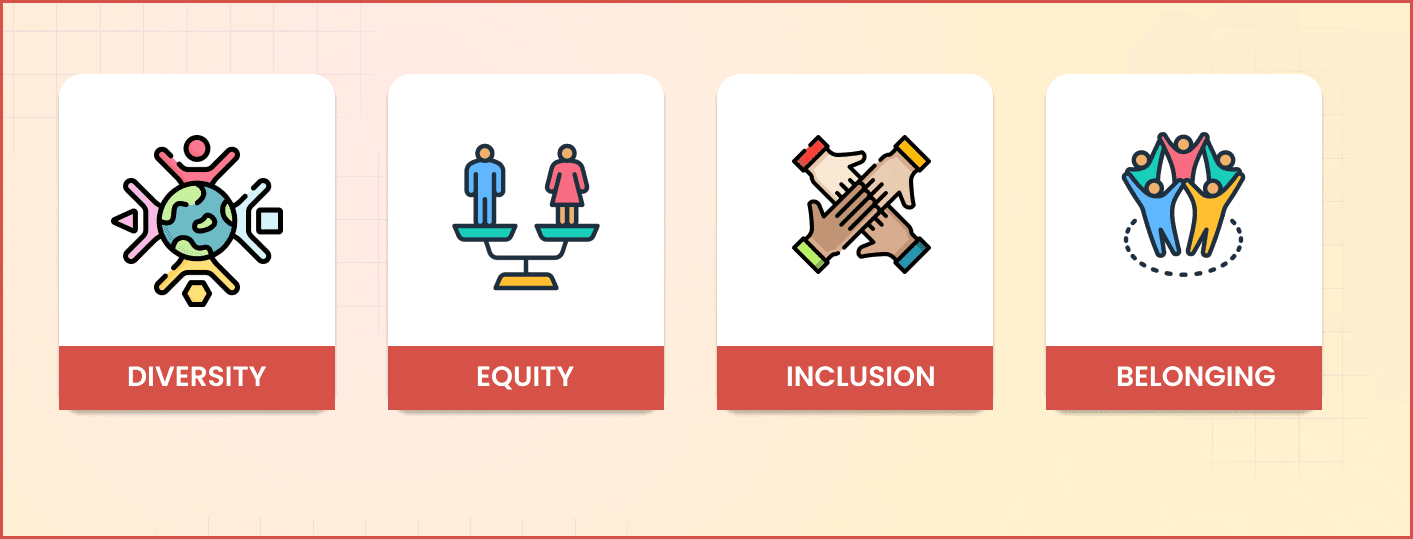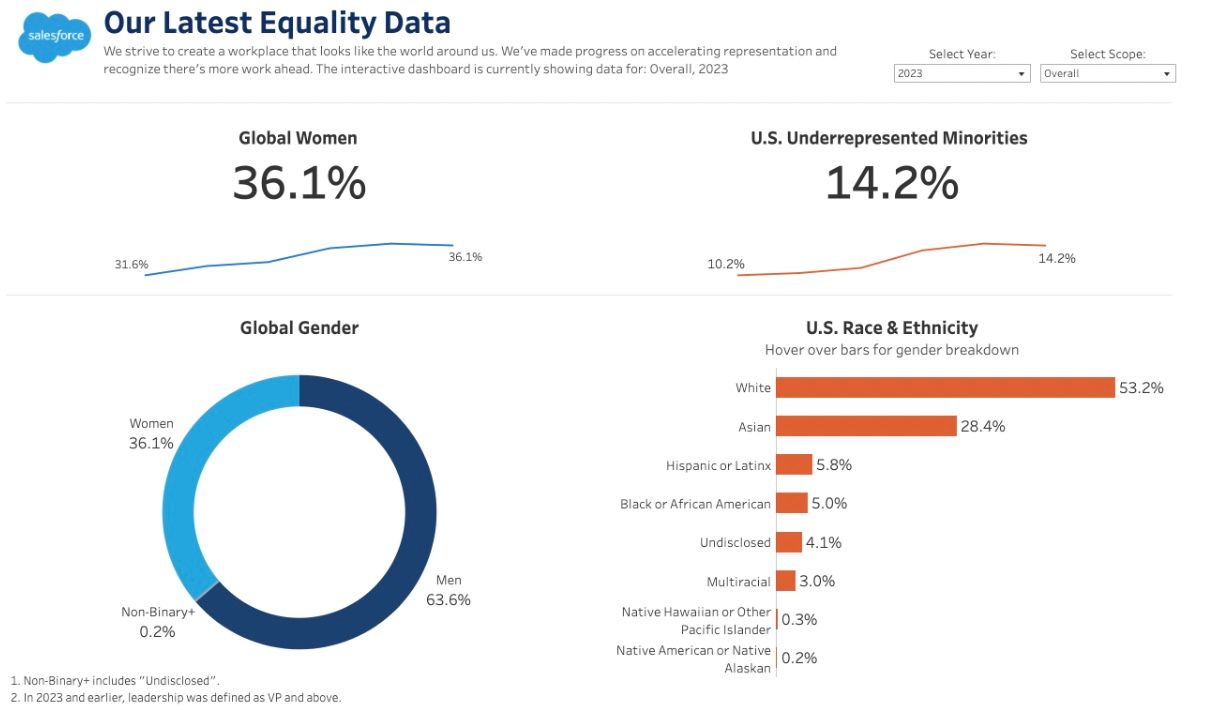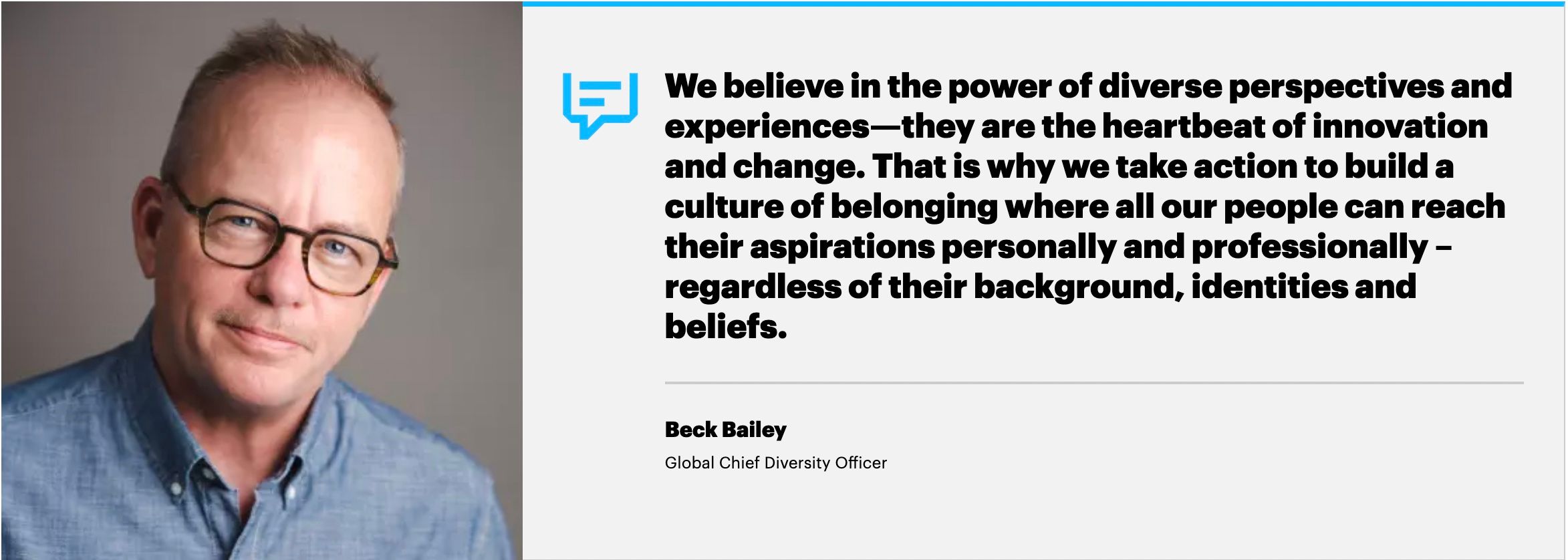
DEIB stands as the foundation of an inclusive workforce. According to a McKinsey report, many organisations are found to be misaligned and have perceptions that vastly differ from those of their employees- 77% of executives believe they have established an inclusive work environment with a strong sense of community among the team, but only 39% of employees consider their workplace to be inclusive.
Such misalignment is critically important for HR and compensation professionals to address because this kind of misalignment in DEIB initiatives can hinder employee engagement, productivity, and retention.
Closing the gap begins with understanding how DEIB initiatives may be viewed differently by employees. This article takes a deep dive into what DEIB really means, the challenges organisations face, and actionable steps to foster a more inclusive environment.
Diversity, Equity, Inclusion, and Belonging- these are the four key elements of a workplace culture when embracing diverse and different backgrounds.

Here's what each component entails:
Each of these parts needs to work together to provide a sense of community that establishes an equitable workplace where the employees can succeed.
While belonging ensures that diverse voices are heard and is measured by quantity, inclusion initiatives are measured in numbers and refers to the emotional connection employees feel toward the organisation. Inclusion is being invited to the table; belonging is feeling comfortable contributing.
An inclusive workplace culture does not necessarily equate to an ability of belonging-indeed, this requires deep engagement, trust, and authenticity leading to employee satisfaction and much better business outcomes as well.
Over the last few years, many business leaders have scrambled to put DEIB programs in place, attempting to tackle barriers to equitable opportunities like bias, inequity, or homogeneous teams in their workplace and more.
Real-world examples can help illustrate how successful DEIB initiatives are implemented in various sectors:
Salesforce has been making outstanding efforts toward increasing DEIB representation through equality programs such as pay equality, equal development opportunities for employees, and equal rights. The company holds regular pay audits, and it also sets up employee resource groups with various communities.

Accenture engages with DEIB since it aims at increasing the number of diversity groups in all levels within the organisation. The company follows diversity initiatives like its unconscious bias training programs, such as mentoring underrepresented employees. Accenture manifests its commitment to inclusion through several leadership positions and high employee engagement rates.

Although it is a company that will always be synonymous with social justice, its initiatives like sourcing and in community activities for equity stands out. The companies sponsor and take part in the causes that advance racial justice and climate justice. This single act has created a sense of belonging to the company with similar values' holders.

DEIB initiatives are the backbone of organizational success. A high-performing DEIB culture can:
Despite the general recognition of the importance of DEIB, organizations face major barriers in implementing and maintaining these practices:
Many employees believe that DEIB departments tend to operate in isolation from the practical work environment of their workers. Employees may view efforts at DEIB as performative in nature, rather than making a real impact.
Compliance to local law and regulations is required, but by no means does legal compliance necessarily denote an inclusive culture. Companies have to do much more than just comply to instil change.
Many organisations are prevented from attracting diverse talent owing to old hiring practices. Aim for as much inclusivity as possible in your recruitment process to achieve a diversified workforce.
Training cannot be effective if considered a one-time requirement and not a demand for an inclusive, ongoing transformation in the culture. The employees and the leaders have to be continuously educated on DEIB principles.
Measuring success is an incredibly hard task in DEIB initiatives. Tracking diversity is fairly easy, whereas inclusion and belonging are much more difficult to measure since sometimes qualitative insight is required.

Here are eight key strategies that would help foster a DEIB culture in your organisation:
Make diversity, equity, and inclusion integrate with every part of the business. Then, employing and promotion policies will be more inclusive and diverse.
Diversity, equity, and inclusion are the root of a workplace where belonging has the best opportunity to grow. Without DEI, no sense of belonging will likely exist among employees.
DEIB to the very core of the company's mission and values. When people see DEIB is really good in a company, they are more likely to buy into it.
Not every candidate will align with your DEIB mission, and that's okay. Your focus should be on attracting individuals who resonate with your vision of an inclusive culture.
Track progress in DEIB by collecting both qualitative and quantitative data. Inclusion and belonging can be measured through employee surveys, focus groups, and engagement metrics.
Intentionality is crucial. Instead of ad-hoc initiatives, create a long-term DEIB strategy with clear goals and milestones.
Freelancers and gig workers often do not feel part of the company culture. Make sure that the flavour of DEIB reaches your contingent workforce through integration into the company's communications, events, and training.
Leadership needs to be champions of DEIB: When leadership engages in DEIB initiatives, employees are more likely to be active participants and take DEIB initiatives seriously.
To effectively carry out DEIB, consider these initiatives:
Provide habitual unconscious bias, cultural competency, and inclusive leadership training.
The encouragement of employee-led groups to come together and share their experiences among underrepresented employees.
Analyze the recruitment processes to identify entry points for diverse candidates as well as ensure an equitable hiring experience.
Reviewing corporate policies regularly with the changing nature of DEIB standards, such as providing flexible arrangements to work, parental leave, and anti-discrimination policies.
Use surveys and mechanisms of feedback to identify how included and valued employees feel and tailor engagement initiatives to foster a sense of belonging.
Engage leaders in clear DEIB objectives and hold them accountable for the same progress. Include DEIB as an integral component of any leadership evaluation for effective results.
DEIB is not a moral imperative alone but an absolute necessity for organizational success. Here's why it matters:
Understanding the challenges and bridging the gap in perception between senior leaders and employees is one way for HR professionals to effect meaningful change toward more DEIB benefits for everyone and establishing a culture of inclusivity.
Contributing to DEIB is a recipe for future success and more than merely a business imperative for compensation professionals and HR leaders. Therefore, it is important for them to ensure that both leadership teams' perceptions and actual employee experiences connected with DEIB initiatives must be understood and bridged.
A DEIB-related workplace will help in creating job satisfaction for all the employees at organization, enhance engagement, innovation, and long-term success by going the extra mile.
To get a deeper understanding of DEIB, listen to great insights from global experts- Melanie Sanders, senior global consultant at The Diversity Movement, and Susie Silver, global DEIB expert, on our special podcast. [Podcast link]
If you are looking to level up DEIB in your organisation or even get started with it, try a demo with CompUp today and grow diversity, equity, inclusion, and belonging in your organisation.
Community Manager (Marketing)
As a Community Manager, I’m passionate about fostering collaboration and knowledge sharing among professionals in compensation management and total rewards. I develop engaging content that simplifies complex topics, empowering others to excel and aim to drive collective growth through insight and connection.
Revolutionizing Pay Strategies: Don't Miss Our Latest Blogs on Compensation Benchmarking